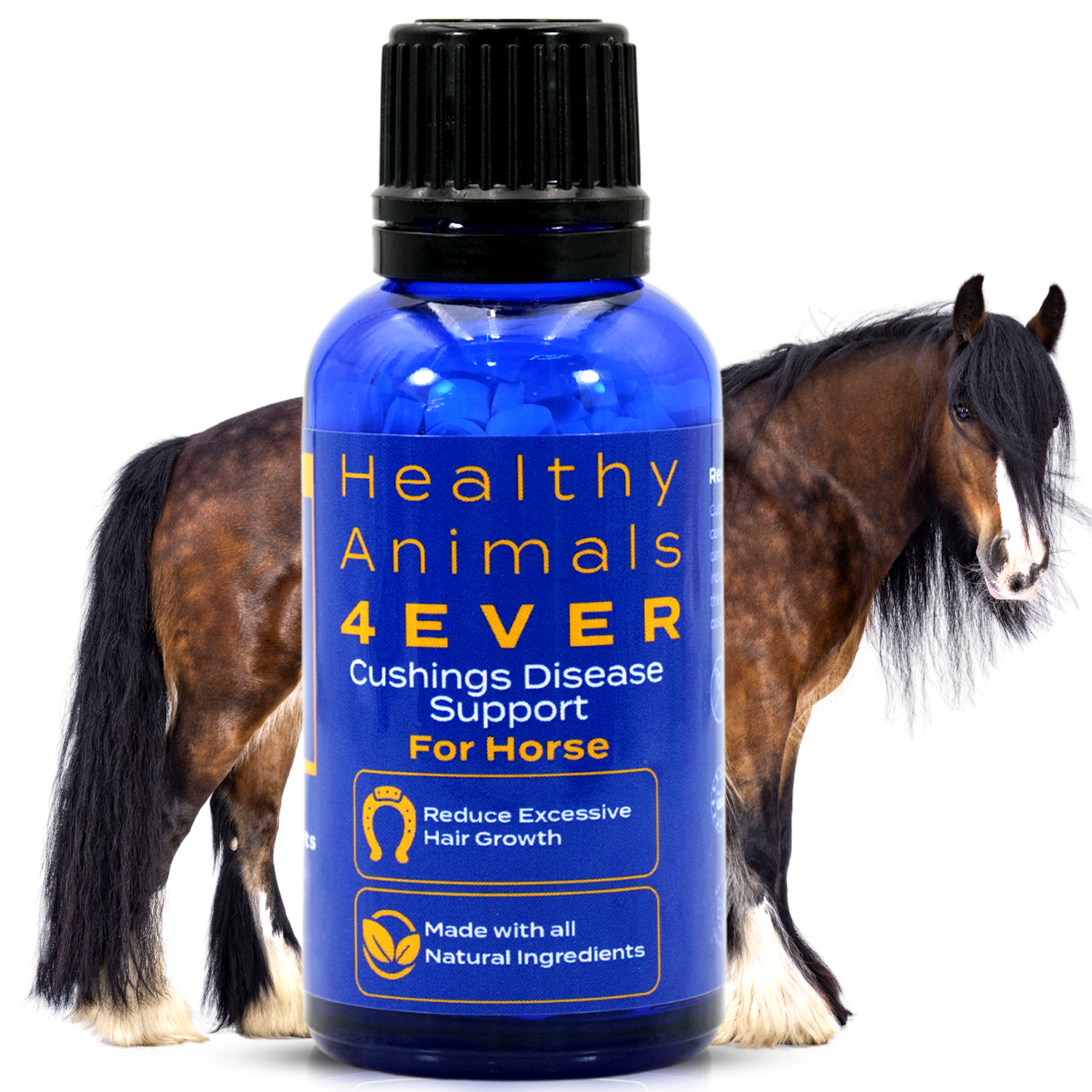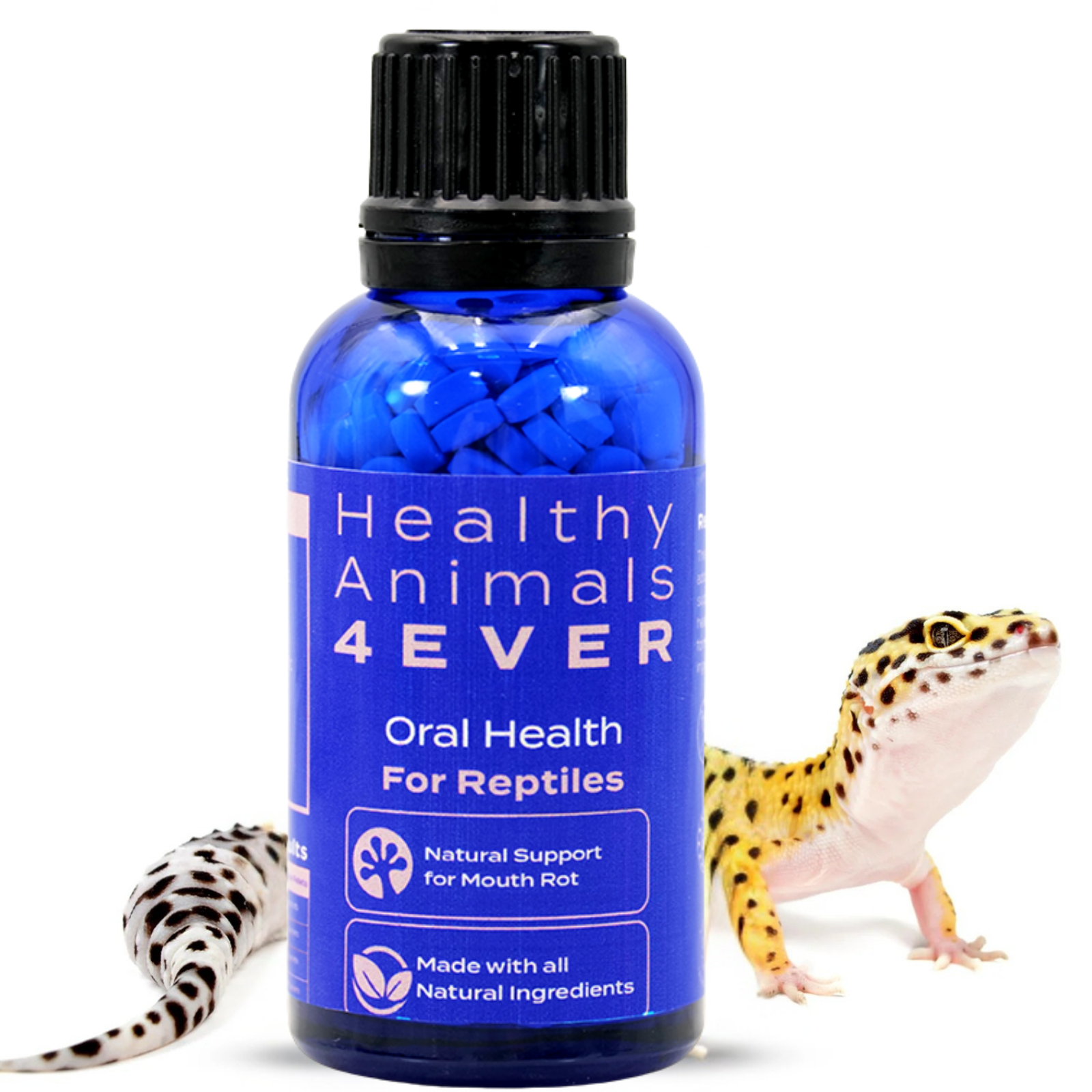Keeping Your Pet Safe During Autumn: Essential Tips for a Happy Season

Falling leaves, bright colors, and fresh air invite you and your pet to stay outside longer than usual. To ensure your pet stays healthy and happy, try following the tips we prepared for this season.
Keeping your pet safe during autumn requires some extra attention to their specific needs and potential hazards that arise during this season.
- Watch out for toxic plants.
Many plants that are harmless to humans can be toxic to pets. During autumn, some plants like mushrooms and certain berries become more prevalent. Keep your pet away from plants they might try to nibble on during walks or outdoor playtime. Some can be toxic to dogs if ingested.
Be familiar with the plants in your area and avoid areas where these plants are prevalent.
Fortress-metabolic Strengthening Formula for Dogs assists in digestion, blood clotting, and removing toxins in your pet.
Some common toxic plants to watch out for:
- Many wild mushrooms are toxic to pets and can be more prevalent during the fall. Avoid letting your pets ingest any wild mushrooms.
- Autumn crocus contains toxins that can cause severe gastrointestinal symptoms, kidney and liver damage, and even death in pets.
- All parts of the sago palm are highly toxic, particularly the seeds. Ingestion can lead to severe liver damage and even be fatal.
- While popular in fall gardens, chrysanthemums can cause vomiting, diarrhea, drooling, and skin irritations in pets if ingested.
- The entire yew plant, including leaves and berries, is toxic to pets and can cause symptoms like vomiting, diarrhea, and heart issues.
- Oleander is highly toxic and can affect the heart, leading to severe symptoms and potentially death.
- Ingesting English ivy can cause vomiting, diarrhea, and other gastrointestinal issues, along with skin irritation.
- Different types of mistletoe have varying toxicity levels, but all can cause gastrointestinal issues and more severe symptoms if ingested.
- While not as toxic as once believed, poinsettias can still cause mild gastrointestinal symptoms in pets.
To keep your pets safe, familiarize yourself with the plants in your environment and avoid planting toxic ones in your yard or garden. If you suspect your pet has ingested a toxic plant, immediately contact your veterinarian or an emergency veterinary clinic.

2. Mind the temperature
Autumn can bring unpredictable temperature fluctuations. Some days might still be warm, while others can be chilly. Be mindful of your pet's comfort, especially if they're sensitive to temperature changes. Provide them with a warm and cozy sleeping area indoors.
Dogs can get chilly in cooler temperatures, especially if they have short coats. Consider getting them a doggy sweater or jacket to keep them warm during walks. Also, be mindful of their paw pads, as cold surfaces can cause discomfort or injury.
3. Adjust their diet
Just like humans, some pets may experience a change in appetite during the cooler months. Consult your veterinarian about whether adjustments to your pet's diet are necessary to maintain a healthy weight and energy level.
Weight Loss Formula for Cats reduces your pet's desire to overeat. Provides a natural energetic boost to your pet's days.
Adjusting your pet's diet during the fall season can help accommodate changes in activity levels and temperature. Here are some tips for adjusting your pet's diet:
- Before making any changes to your pet's diet, it's important to consult your veterinarian. They can provide specific recommendations based on your pet's age, breed, size, health status, and activity level.
- Monitor your pet's weight as the weather cools down and outdoor activities may decrease. If your pet gains weight during the fall, you might need to adjust their calorie intake.
- If your pet is less active during the fall, they might require fewer calories. On the other hand, if you engage in more outdoor activities like hikes, they might still need their regular calorie intake or even slightly more.
- Opt for high-quality pet food that provides balanced nutrition. Look for options with natural protein sources, whole grains, and essential nutrients.
- Some pet food brands offer limited-time seasonal formulas that might be formulated with ingredients that align with the fall season. These could include ingredients like pumpkin, sweet potatoes, or cranberries.
- During colder weather, consider adding warm foods to your pet's diet. Mix warm water or low-sodium broth into their kibble to create a warm and appealing meal.
- Even though it's cooler, pets still need to stay hydrated. Ensure they have access to clean and fresh water at all times, especially if indoor heating can lead to drier air.
- Be cautious not to overfeed your pet. While giving treats and extras during the holiday season is tempting, excessive calorie intake can lead to weight gain.
- Your pet's stool should remain consistent in quality. It could indicate a dietary issue if you notice significant changes in consistency or frequency.
- If you're transitioning your pet to a new food or making adjustments, do so gradually to avoid digestive upset.

4. Keep your pet on a leash
Fallen leaves can cover up hazards like sharp objects or potential toxins. When walking your pet, especially in areas with many fallen leaves, keep them on a leash to prevent them from ingesting anything harmful or stepping on something sharp.
Ensuring your dog is visible during walks is important with shorter daylight hours. Consider using reflective gear or attaching a light to their collar to make them more visible to drivers and pedestrians.
You might need to adjust your dog's walking schedule as the weather changes. Walk them during daylight hours when it's warmer to avoid chilly temperatures, especially if your dog is sensitive to the cold.
5. Grooming
While autumn might seem less prone to fleas and ticks, these pests can still be active during this time. Regular grooming is essential to keep your pet's coat in good condition. Brushing also helps remove loose fur and distribute natural oils.
Continue to brush your pet regularly during the fall. Brushing helps remove loose fur, prevents matting, and distributes natural oils for a healthy coat. The bathing frequency will depend on your pet's breed and activity level. Use a pet-specific shampoo and avoid over-bathing, as it can strip their coat of natural oils. While grooming, inspect your pet's coat for any signs of skin issues, parasites, or changes in texture.
Skin Allergy Rash and Irritations - Dogs relieve the itch and irritation caused by environmental allergens and skin irritants. Promotes faster healing.
For long-haired pets, consider giving them a trim to prevent matting and to keep them comfortable. Trim hair around the paw pads to prevent debris accumulation. Check and clean your pet's ears regularly, especially if they're prone to ear infections. Keep your pet's nails trimmed to a safe length to prevent discomfort and potential injury.
Maintain dental hygiene by brushing your pet's teeth regularly or using dental treats approved by your veterinarian.
Oral Health Gum Healing Formula for Cats reduces gum inflammation and helps relieve pain while promoting healthy eating.
6. Flea control
Fleas can remain active during the fall, so continue your pet's year-round flea prevention routine. Talk to your veterinarian about the most suitable flea prevention products for your pet. They can recommend treatments that are safe and effective.
Sneezing and Wheezing Due to Allergy Formula for Cats reduce wheezing, breathing difficulties, cough, and fatigue in pets.
Regularly inspect your pet's coat for signs of fleas or flea dirt (tiny black specks that look like pepper). If you notice any, take action immediately.
Fleas can infest indoor spaces as well. Vacuum your home regularly, including carpets, upholstery, and pet bedding. Empty the vacuum bag or canister to prevent fleas from reinfesting.
Keep your outdoor areas clean and well-maintained to minimize flea habitats. Trim bushes and remove debris where fleas might hide. If you have a severe flea infestation, consider using pet-safe environmental sprays or treatments your veterinarian recommends.
Wash your pet's bedding and toys in hot water to kill any potential flea eggs or larvae. Follow the instructions on the flea prevention product carefully and apply it consistently. Missing doses can allow fleas to return.

7. Outdoor hazards
Watch for hazards such as rodenticides and pesticides that might be used more frequently as people prepare for winter. These chemicals can be harmful to pets if ingested. Ensure your pet doesn't have access to areas treated with these substances.
Puddles can contain toxins, chemicals, or bacteria that can be harmful if your dog drinks from them. Always discourage your dog from drinking standing water and keep them on a leash if you're unsure about the water source.
While piles of fallen leaves can be tempting for dogs to play in, they can also hide hazards like sharp objects or small critters. Be cautious and supervise your dog to prevent them from ingesting or getting injured by these items.
People tend to use antifreeze in their cars as the weather cools down. Unfortunately, antifreeze is highly toxic to pets, and its sweet taste can attract them. Immediately clean up any spills and store antifreeze in a place inaccessible to your pets.
All Digestive - Dogs help restore digestive balance. Relieves upset stomach, inflammation of gastritis, and symptoms of diarrhea.
8. Halloween safety
Halloween can bring about its own set of risks. Keep your pet away from candy, especially chocolate, which is toxic to many animals. Also, be cautious with decorations your pet might chew on or become entangled in.
Cats are often curious and might play with or chew on decorations like fake leaves, ribbons, or other items. Ensure decorations are secure and not easily accessible to prevent ingestion or choking hazards.
Autumn might include fireworks displays in some places, such as on Halloween or during harvest festivals. If your pet is scared of fireworks, create a safe and quiet indoor space away from the noise and bright lights.
9. Provide indoor fun
Cooler weather might mean more time indoors. Keep your dog mentally stimulated with interactive toys, puzzles, and training sessions to prevent boredom and restlessness.
Cats might seek warm spots to hide in as the weather cools. Check inside dryers, under warm car hoods, and other potential hiding places before using them.
If your cat spends more time indoors due to colder weather, ensure they have plenty of toys and opportunities for mental and physical stimulation.
Indoor enrichment is essential to keep your pets mentally stimulated and entertained, especially during the fall when outdoor activities might be limited.
For dogs:
- Interactive puzzle toys challenge your dog's mind and provide mental stimulation while they work to retrieve treats or kibble.
- Hide treats or toys around the house and encourage your dog to find them using their nose and senses.
- Use the extra indoor time for training sessions. Teach new tricks or practice commands to keep their minds engaged.
- Set up a miniature indoor obstacle course using cushions, tunnels, and low jumps to engage your dog's physical and mental abilities.
- Engage your dog's natural scenting abilities by creating scent trails or hiding treats in different areas for them to find.

For cats:
- Toys that move or make noise can mimic the behavior of prey, keeping your cat engaged and entertained.
- Provide shelves, cat trees, or window perches for your cat to climb and observe their surroundings from a higher vantage point.
- Play with feather wands or other interactive toys to simulate hunting behavior and encourage exercise.
- Cats love boxes. Place a few around your home, cut holes in them, and watch your cat explore and hide.
- Offer catnip toys or even grow catnip plants indoors to give your cat a sensory experience.
Remember always to supervise playtime and choose toys and activities that are safe and appropriate for your pet's size and species. Rotate and vary enrichment activities to prevent boredom and keep your pets mentally engaged throughout the fall season.
10. Fireplace safety
If you have a fireplace, ensure it's securely covered to prevent your dog from getting too close to the flames or embers. Also, keep firewood and other potentially hazardous items out of reach.
If you're using candles, fireplaces, or space heaters, ensure your cat cannot access them. Cats are known to be curious and might accidentally knock over a candle or get too close to a heat source.
Better Breathing Respiratory Support Formula for Dogs helps your pet's lungs get relief from asthma and other breathing difficulties.
11. Hunting behavior
In some areas, autumn can bring out more wildlife, which might trigger cat-hunting instincts. Keep them indoors or supervised to prevent them from chasing or getting into altercations with wild animals.
Hunting behavior is natural for cats and can become more pronounced during the fall season due to various factors. Why might hunting behavior increase in cats during the fall, and how can it be managed?
During the fall, smaller creatures like rodents and insects might become more active as they search for food before winter. This increased activity can trigger a cat's hunting instincts. Some birds and other small animals might migrate during the fall, catching a cat's attention as potential prey.
Managing hunting behavior:
- Since hunting behavior is instinctual, providing alternative outlets for your cat's energy and natural instincts is important.
- Engage in interactive play with toys that mimic prey movement. Wand toys with feathers or dangling objects can simulate hunting scenarios.
- Use puzzle feeders to make your cat work for their food. This not only provides mental stimulation but also simulates hunting behavior.
- Hide treats or toys around the house to encourage your cat to search and "hunt" for them.
- If your cat goes outdoors, consider using an enclosed outdoor space where they can experience the sights, sounds, and even scents of the outdoors while remaining safe.
- Cats feel secure when observing their surroundings from a higher vantage point. Provide shelves, cat trees, or window perches.

- Cats can get bored with the same toys. Rotate their toys regularly to keep their interest piqued.
- Battery-operated or automated toys that move unpredictably can provide entertainment and mimic prey movement.
- Introduce different textures, scents, and sounds to stimulate your cat's senses.
- Regular play sessions can help expel pent-up energy and satisfy your cat's hunting instincts.
- When your cat exhibits appropriate hunting behaviors with toys or puzzle feeders, offer praise and treats as positive reinforcement.
Remember that while allowing your cat to hunt is natural and fulfilling, it's important to provide safe alternatives and ensure their safety, especially if they go outdoors. If your cat has access to the outdoors, ensure they're supervised to avoid harming themselves or wildlife.
12. Warm sleeping areas
Ensure your pet has a warm and comfortable place to sleep. Provide extra bedding or blankets to keep them cozy, especially for pets that are more sensitive to cold temperatures.
13. Regular exercise
Even in cooler weather, pets still need exercise to maintain a healthy weight and mental well-being. Adjust your outdoor activities to the weather conditions, and be mindful of your pet's comfort. Maintain regular exercise routines. Take advantage of milder weather for longer walks or outdoor play sessions. Remember that as days get shorter, you might need to adjust your schedule to ensure you exercise during daylight.
- For dogs:
Enjoy the cooler temperatures by taking your dog for regular walks. Consider longer walks during the day when it's warmer. Explore nature trails and hiking paths with your dog. Be sure to bring water, snacks, and any necessary safety equipment. Playing fetch in a safe and enclosed area is a great way to exercise your dog's body and mind. If your dog enjoys interacting with other dogs, consider visiting a dog park for off-leash play.
Set up a mini agility course in your backyard or a safe area. Use objects like cones, tunnels, and jumps to challenge your dog. If your dog enjoys water, find a dog-friendly beach, lake, or pool for swimming fun.
Use puzzle and treat-dispensing toys to engage your dog mentally while they work for their treats.
- For cats:
Engage your cat in interactive play sessions using toys that mimic prey movement. Wand toys with feathers or strings are great for this. Remote-controlled toys or toys that move unpredictably can stimulate your cat's hunting instincts.
Install shelves, cat trees, or window perches to encourage climbing and exploration. Hide treats or toys around the house to encourage your cat to "hunt" for them.
Cats love exploring and playing in paper bags and boxes, providing them with mental and physical stimulation.

14. Regular visits to the vet
Autumn is a good time for a routine checkup with your veterinarian. They can assess your pet's overall health and address any concerns you might have for the upcoming season.
The Bottom Line
Though your pet's safety should be your number one priority, it should not stop you from having fun and enjoying all the season has in store. Just follow these simple steps, and fun and health are guaranteed.
Go out and enjoy!















